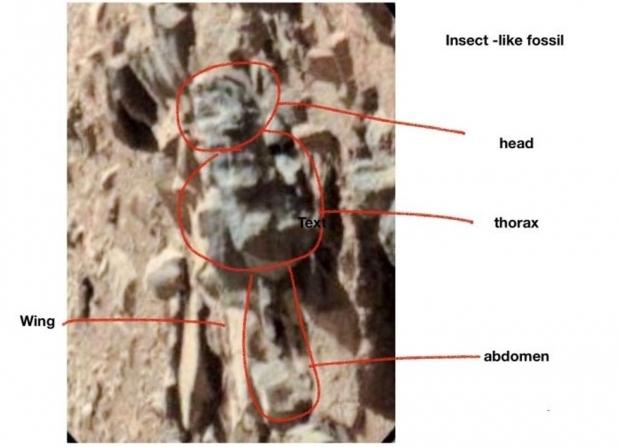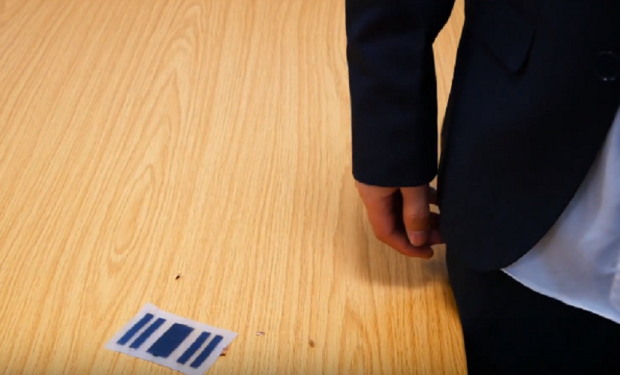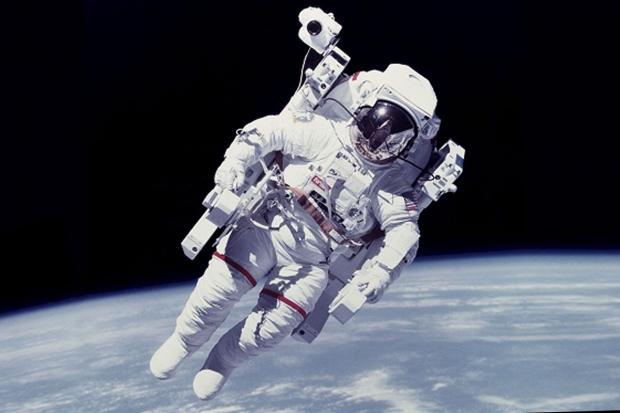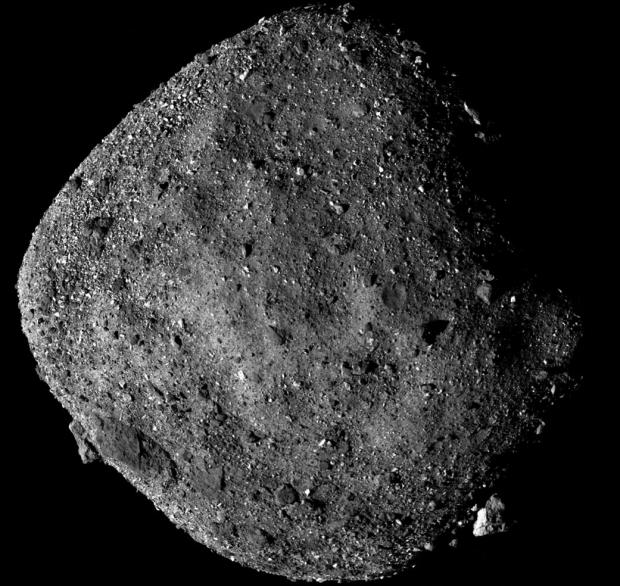Science, Space, Health & Robotics News - Page 376
This strange X17 particle may explain dark matter & natures 5th force
For quite some time, physicists have been basing their theories off four fundamental forces of nature, but what if we are on the verge of adding one more force of nature into the mix?
Scientists are currently collating evidence to support the theory that there is, in fact, a fifth force of nature that has yet to be detected and that this new force of nature could help explain the extremely mysterious dark matter. This new force of nature dates back to 2016 when the first study was published where findings supported the claim that there is a fifth force. The team behind this study were looking for "dark photons" which are believed to be "carrying" dark matter. To try and see these "dark photons" the researchers used a particle accelerator to shoot particles through a vacuum and observed the reaction.
The researchers closely monitored beryllium-8, an unstable isotope, and found unexpected light emissions that were against the law of conservation of energy. Researchers out of the University of California, Irvine, said that this unknown particle was not a dark photon but instead a boson. A boson is a particle in quantum mechanics that acts as the "glue" that holds matter together. Bosons are present with each of the four fundamental forces of nature, meaning that if researchers suggest that this unknown particle is a boson -- we have a new fifth force of nature.
Continue reading: This strange X17 particle may explain dark matter & natures 5th force (full post)
Scientist claims NASA photos prove extraterrestrial life is on Mars
Everyone wants to know if we are alone in the universe, or if there was some form of life outside of our moderately-sized blue planet. Perhaps there was, and we already have the photos.
Entomologist, William Romoser gave an extensive presentation on his analysis of NASA's Mars rover images this past Tuesday. Romoser claimed throughout the presentation that through his analysis of the images, he can provide evidence to support that life was once and still is present on our red neighbor. Looking at the above image, Romoser says, "Once a clear image of a given form was identified and described, it was useful in facilitating recognition of other less clear, but none-the-less valid, images of the same basic form."
Romoser claims from the images that reptiles and other insect-like forms of life were once on the red planet, and that NASA's rover images are evidence of that. Romoser also says, "There has been and still is life on Mars. There is apparent diversity among the Martian insect-like fauna which display many features similar to Terran insects that are interpreted as advanced groups - for example, the presence of wings, wing flexion, agile gliding/flight, and variously structured leg elements."
Continue reading: Scientist claims NASA photos prove extraterrestrial life is on Mars (full post)
Researchers make next-gen soft skin-like robots that are pocket-size
Soft Robotics just took a step forward into the future with a new advancement that sees the development of stretchable skin-like robots.
This new technology has been published in Soft Robotics and has come out of the University of Bristol. The difference between 'soft robots' and normal robots is that soft robots can adapt to their environment by stretching and shifting design, while normal robots are much more ridged. Up until now, researchers have had to choose between the soft robots' ability to move and its ability to be able to grip onto surfaces.
Now, researchers from the University of Bristol have taken large inspiration from biological life such as slugs and snails and developed a new robotic skin that can do both. This new robotic skin can crawl across surfaces by the new artificial muscles that researchers have developed for it and grips to surfaces using electrical charges. The new invention has been titled ElectroSkin, and it's so stretchable that it can be compressed down a normal pants pocket.
Continue reading: Researchers make next-gen soft skin-like robots that are pocket-size (full post)
SpaceX's Starship rocket blew up during pressure test, not a 'setback'
SpaceX is currently in the midst of testing its prototype Starship Mk1 vehicle, and with every good prototype you are bound to run into some complications.
During the Starship's max pressure testing that occurred yesterday in Texas, the next-gen spacecraft blew its top and erupted huge plumes of gas into the sky. Some pieces of the craft busted off the ship and scattered around the testing site. A spokesperson for SpaceX told The Verge that "The purpose of today's test was to pressurize systems to the max, so the outcome was not completely unexpected."
The spokesperson also said that "There were no injuries, nor is this a serious setback." While the above video might seem like its a massive problem, SpaceX is assuring the public that this is no set back and is routine testing procedure. Instead of repairing Mk1 and continuing ahead with that design, SpaceX founder and CEO, Elon Musk has said on Twitter that they will instead move towards a new and more up-to-date design that the company had on the shelf.
Continue reading: SpaceX's Starship rocket blew up during pressure test, not a 'setback' (full post)
This gamma-ray burst emitted more energy than the Sun's 10b year life
NASA has said that the Hubble Space Telescope is giving astronomers a look at the location of the most powerful gamma-ray burst ever recorded.
According to the post on the official NASA website, in January this year, a gamma-ray burst was detected by many of NASA's telescopes, and since then further study has been made by Hubble and astronomers. This gamma-ray burst was a trillion times more powerful than visible light, and just within the few seconds of the blast happening, it emitted more energy than the sun has provided over its 10 billion year life.
Andrew Levan of the Institute for Mathematics, Astrophysics and Particle Physics Department of Astrophysics at Radboud University in the Netherlands said, "Hubble's observations suggest that this particular burst was sitting in a very dense environment, right in the middle of a bright galaxy 5 billion light years away. This is really unusual, and suggests that this concentrated location might be why it produced this exceptionally powerful light".
Continue reading: This gamma-ray burst emitted more energy than the Sun's 10b year life (full post)
Solar energy breakthrough: fossil fuels replaced with AI & sunlight
You might not have heard about Heliogen before, but you will soon if their new technology continues breaking barriers -- the Bill Gates-backed energy startup has successfully concentrated solar energy at "breakthrough" temperatures breaching 1000C (1832F), making it hot enough that it could replace fossil fuels in industrial tasks like producing cement and steel.
Heliogen is tapping AI in the form of computer vision to precisely align a bunch of mirrors to reflect sunlight on a single target, therefore concentrating all of the sun's energy into one point. Until now, this wasn't exactly possible and it's what Heliogen has done differently - and successfully.
At their commercial facility in Lancaster, California, Heliogen experienced what is just our first taste at the realms of replacing fossil fuels by using carbon-free, ultra-high temperature heat from the sun, transforming that sunlight into fuels. Before now, commercial concentration of sunlight have only reached 565C (1049F) -- but Heliogen's work here saw them hit 1000C (1832F). These temperatures are normally only reached by burning fossil fuels, making this a big breakthrough.
Continue reading: Solar energy breakthrough: fossil fuels replaced with AI & sunlight (full post)
Elon Musk's SpaceX 'Starship' takes its first 'breath' of life
SpaceX seems to have just breathed life into its biggest rocket yet, the full-size Starship Mk1 vehicle. Are we ready to take off yet?
Perhaps not just yet, but the preliminary testing before take-off is underway. According to onlookers of the Starship testing at SpaceX's facilities near South Texas town Boca Chica, the Starship prototype entered a pressure testing phase. Above, we have a video from the NASASpaceflight YouTube Channel, who captured SpaceX employees working on Starship and then it's first-ever vent test.
SpaceX CEO and founder Elon Musk has said that the Starship Mk1 will be companies deep-space transportation vehicles and that the rockets used aboard the ship will be reusable to minimalize flight costs. Starship is 165-feet tall and uses SpaceX's biggest rocket yet, the Super Heavy. SpaceX recently got selected by NASA to work on the Artemis lunar program to design a lunar lander, check out that article here.
Continue reading: Elon Musk's SpaceX 'Starship' takes its first 'breath' of life (full post)
NASA study: low-gravity can cause reverse blood flow and even clotting
Since humans could see there were other planets nearby, we have always wanted to pursue these distant worlds, but what are the risks of traveling there?
NASA has recently conducted a new study on astronauts that spent some time on the International Space Station (ISS) and returned back to Earth. The study showed evidence of the human being affected by low-gravity, and more specifically, in the astronaut's upper body. The study looked at eleven astronauts, nine men and two women who spent an average of six months aboard the ISS.
NASA used ultrasounds on the astronauts and found that by the 50th day aboard the floating lab that seven of the eleven astronauts had a lack of blood flowing through their internal jugular vein. The study also found that the blood sometimes even went in reverse. For those that don't know what the internal jugular vein is, it's a vital vein located on the side of your neck that collects blood from the brain and face. NASA also found that one of the astronauts developed clotting in the vein while still in flight back to Earth.
Continue reading: NASA study: low-gravity can cause reverse blood flow and even clotting (full post)
What's the cure for Climate Change? This scientists says cannibalism
So what happens when we run out of food due to climate change pushing us in that direction? A Swedish scientist has said that we should consider the idea of eating human flesh.
A Swedish scientist called Soderlund spoke throughout an interview on the State Swedish Television channel TV4. Throughout his interview he gave a power-point presentation called "Can you Imagine Eating Human Flesh?". As you can imagine this power-point included many topics that pointed towards cannibalism being the solution to the ill effects of climate change.
Soderlund explained that he isn't calling for people to go out and kill their neighbours and eat their corpses for dinner like humans did back in ancient times. Instead, he argues that over time food sources will become more scarce which would then result in people having to think outside the box to obtain food. That outside of the box thinking would first start with humans consuming pets, insects and then eventually other humans. The scientist believes that if people were introduced to human flesh over a long period of time there wouldn't be that much of a resistance.
Continue reading: What's the cure for Climate Change? This scientists says cannibalism (full post)
Meteors may have assisted in life's origin, first space 'sugars' found
Scientists have been pondering the origins of life since they have had the mental capacity to do so. Today we have been brought one step closer to the answer.
A team of scientists has made a brand new breakthrough discovery regarding the origins of life and how they occurred on Earth. The team has found ribose, arabinose, and xylose sugars in two different meteorites, which has now been added to an already growing list of biologically relevant compounds that have been found in space rocks. Ribose is a critical component of RNA (ribonucleic acid), and in modern life, RNA is the messenger molecule that copies genetic instructions from DNA.
Yoshihiro Furukawa of Tohoku University, Japan, lead author of the study published in the Proceedings of the National Academy of Sciences, said "Other important building blocks of life have been found in meteorites previously, including amino acids (components of proteins) and nucleobases (components of DNA and RNA), but sugars have been a missing piece among the major building blocks of life. The research provides the first direct evidence of ribose in space and the delivery of the sugar to Earth. The extraterrestrial sugar might have contributed to the formation of RNA on the prebiotic Earth which possibly led to the origin of life."
Continue reading: Meteors may have assisted in life's origin, first space 'sugars' found (full post)











